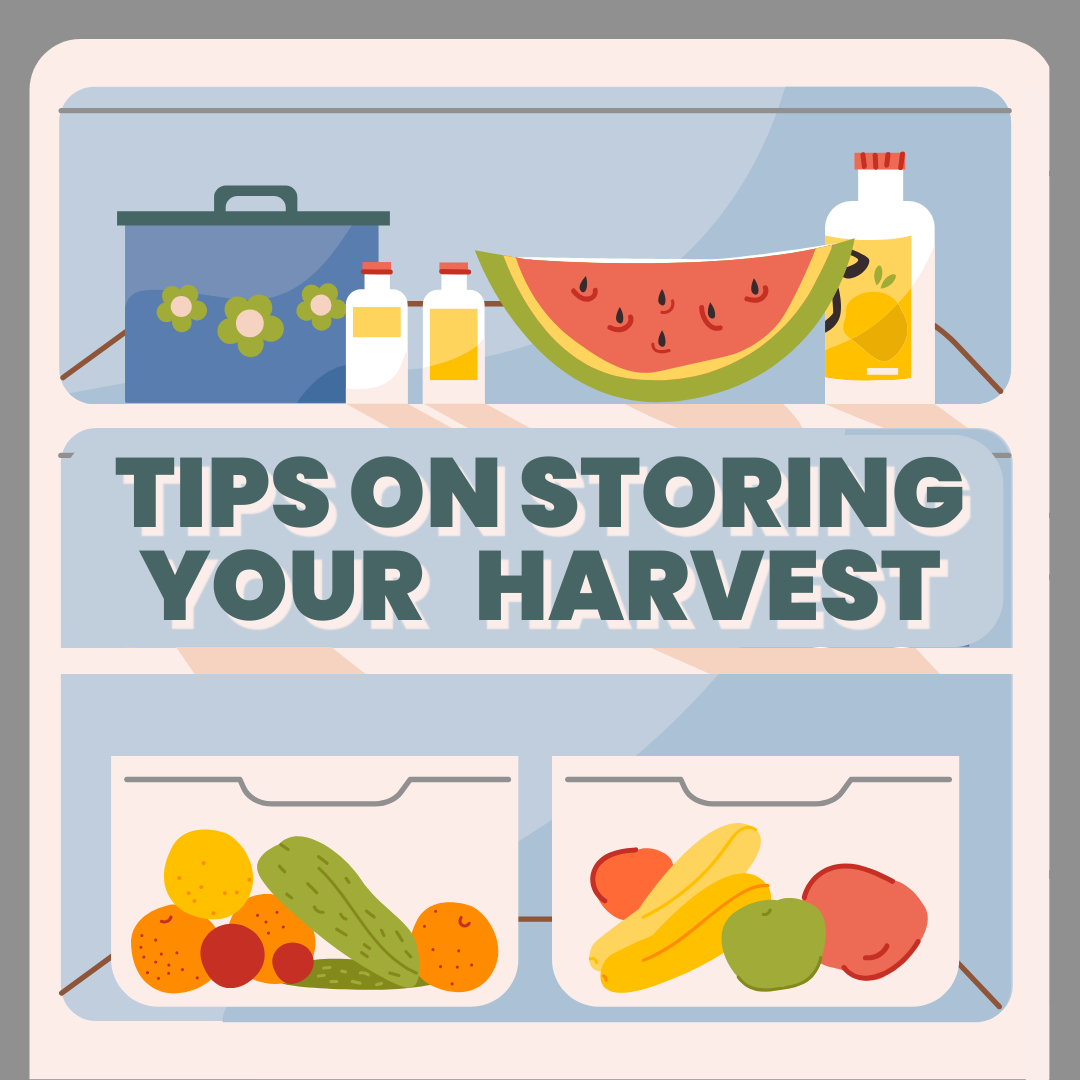We’ve all seen the forgotten wilted greens on our fridge a week after picking them from our garden. It’s disappointing, to say the least, when we don’t get to enjoy the fruits of our labour and instead end up on the compost bin. How can we prevent this?
According to the Love Food Hate Waste campaign by the government of Canada, each Canadian household amounts to 140 kilograms (about half the weight of a large motorcycle) of wasted food per year, totaling up to 2.3 million tonnes of edible food wasted each year in Canada. More than half of it is avoidable with proper food storage.
So what can we do? Here are some tips you can easily start doing at home:
1. Don’t wash your produce right away.
Washing your harvest prematurely can cause rot and shorten the life of your produce. It’s best to wash produce right before you eat them, unless they are covered in soil and would make a mess in your kitchen.
2. Wrap your leafy greens.
Leafy greens such as lettuce, kale and chard in damp paper towels or cloth and then store them in a loosely tied bag to maintain humidity and avoid wilting.
3. Keep fruits like bananas, apples and tomatoes separate in a loosely tied bag.
Some produce give off a gas called ethylene that speeds up the ripening process. To keep foods longer, separate ethylene producing foods from other produce. Other examples of ethylene producers are kiwis, melons, avocados, pears and peaches.
4. Store your onions, garlic, potatoes and winter squash in the pantry.
Onions (yellow, red or white) are best stored in a cool, dry, dark place, away from potatoes. Fruits and onions that release ethylene gas speed up the ripening and sprouting of potatoes.
5. Refrigerate green onions to keep them fresh.
Unlike other onions that are freshest at room temperature, green onions should be kept refrigerated. To extend their life, chop your green onions into small pieces and store them in a sealed bag in the freezer. Green onions can be frozen for three to four months.
6. Store your fruits on the counter.
Many fruits like melons, citrus, and tomatoes (away from direct sunlight) are best stored at room temperature on the counter. Stone fruits including apricots, peaches, plums, and nectarines can be kept on the counter to ripen and then moved to the refrigerator to extend their freshness. However, cherries should be refrigerated immediately in a sealed container or bag to maintain their quality.
7. Utilize your crisper drawer.
It is designed to help decrease water loss (transpiration) in fruits and vegetables and can be very useful to make them last. The adjustable levers on the crisper drawers change humidity levels. If your fridge has these, set one to high humidity (closed) to put your veggies that are prone to wilting in (carrots, leafy greens, broccoli, cucumber, beans, peppers), and the other drawer to low humidity (open) for fruits that have a tendency to rot (apples, pears, grapes, mushrooms, melons, mangos)
8. Can, Pickle, or Dehydrate.
Preserving your abundant harvest can be achieved through methods like canning, pickling, and dehydrating. Pickling enhances the flavors of beets, green beans, shallots, and cucumbers. Homemade jams and chutneys, preserved through canning, can enrich your winter pantry. Moreover, dehydrating doesn't require special equipment; you can simply clean, dry, thinly slice your produce, and bake it at the lowest temperature (250ºF/130ºC) for a few hours until completely dry.
9. Leave crops in the ground.
As the season ends, you might want to keep hardier vegetables in the ground instead of harvesting them immediately. Root crops like beets, carrots, rutabagas, parsnips, and turnips can remain in the ground well into late fall and early winter. These vegetables may become sweeter and more flavorful after exposure to frost, making them even tastier. However, remember to harvest them before the ground completely freezes.
10. Share your harvest.
There is no better way to show your appreciation for your loved ones than by giving them food you grew yourself. Share your produce with your friends, family, neighbours or people in need.
Savouring the fruits (and vegetables) of your labour is one of the most rewarding aspects of gardening. To fully appreciate your harvest, store your produce properly to minimize food waste.
For more tips and information on storing and preserving your food, visit https://lovefoodhatewaste.ca/ and 15 Tips On How To Store and Preserve Your Garden Harvest - Farmers' Almanac - Plan Your Day. Grow Your Life. (farmersalmanac.com).










